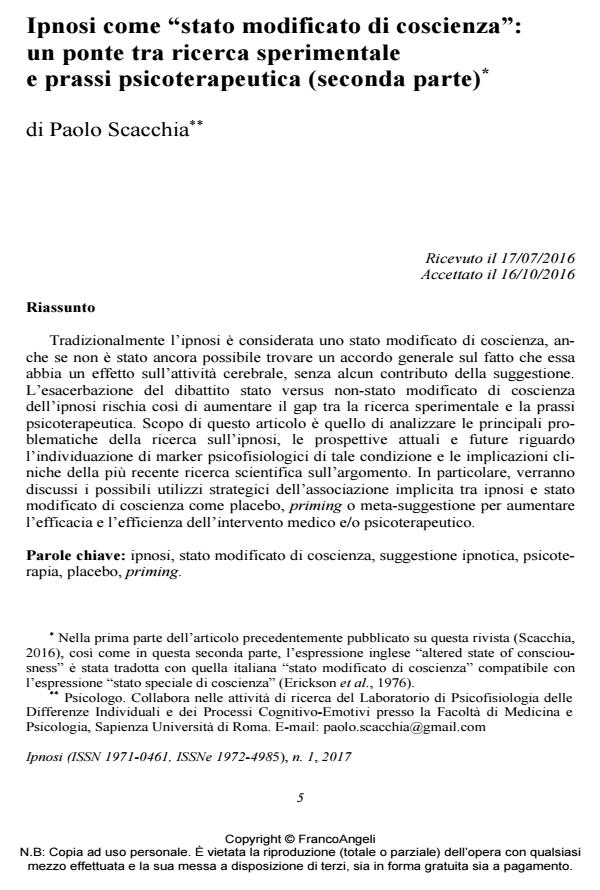Ipnosi come "stato modificato di coscienza": un ponte tra ricerca sperimentale e prassi psicoterapeutica (seconda parte)
Titolo Rivista IPNOSI
Autori/Curatori Paolo Scacchia
Anno di pubblicazione 2017 Fascicolo 2017/1
Lingua Italiano Numero pagine 35 P. 5-39 Dimensione file 579 KB
DOI 10.3280/IPN2017-001001
Il DOI è il codice a barre della proprietà intellettuale: per saperne di più
clicca qui
Qui sotto puoi vedere in anteprima la prima pagina di questo articolo.
Se questo articolo ti interessa, lo puoi acquistare (e scaricare in formato pdf) seguendo le facili indicazioni per acquistare il download credit. Acquista Download Credits per scaricare questo Articolo in formato PDF

FrancoAngeli è membro della Publishers International Linking Association, Inc (PILA)associazione indipendente e non profit per facilitare (attraverso i servizi tecnologici implementati da CrossRef.org) l’accesso degli studiosi ai contenuti digitali nelle pubblicazioni professionali e scientifiche
Tradizionalmente l’ipnosi è considerata uno stato modificato di coscienza, anche se non è stato ancora possibile trovare un accordo generale sul fatto che essa abbia un effetto sull’attività cerebrale, senza alcun contributo della suggestione. L’esacerbazione del dibattito stato versus non-stato modificato di coscienza dell’ipnosi rischia così di aumentare il gap tra la ricerca sperimentale e la prassi psicoterapeutica. Scopo di questo articolo è quello di analizzare le principali problematiche della ricerca sull’ipnosi, le prospettive attuali e future riguardo l’individuazione di marker psicofisiologici di tale condizione e le implicazioni cliniche della più recente ricerca scientifica sull’argomento. In particolare, verranno discussi i possibili utilizzi strategici dell’associazione implicita tra ipnosi e stato modificato di coscienza come placebo, priming o meta-suggestione per aumentare l’efficacia e l’efficienza dell’intervento medico e/o psicoterapeutico.
Parole chiave:Ipnosi, stato modificato di coscienza, suggestione ipnotica, psicote-rapia, placebo, priming.
Paolo Scacchia, Ipnosi come "stato modificato di coscienza": un ponte tra ricerca sperimentale e prassi psicoterapeutica (seconda parte) in "IPNOSI" 1/2017, pp 5-39, DOI: 10.3280/IPN2017-001001